All Photos by the Old Naturalist
Download the Animal Homes Activity. Answer the questions using the text below. Click here for the PDF.
One way to learn about what type of creatures live near you is to do a survey of animal homes. As you would guess the size of the hole is dependent upon the size of the animal. For instance, a mouse would not be living in a large hole, since predators would go into the hole and eat them. After doing the survey, you may find six 5 inch holes, do not assume that six skunks live near you, but that there is a possibility that skunks live in your neighborhood.
Homes in trees
On cold winter nights, a chickadee will find a tight insulated place in the tree bark or a hollow. It will puff out its feathers to conserve heat and then go into a state of hypothermia, lowering its body temperature about 20°F (http://www.nasw.org/users/nbazilchuk/Articles/chickadee.htm/ ; http://www.adn.com/2010/12/27/…/where-do-chickadees-catch-zs.html/). In the spring, a chickadee pair will nest in the hole of a dead tree. A chickadee will dig out the cavity with its beak and line it with some bedding material. The opening to the nest is one inch and is usually less than 15 feet above the ground.
A crow nest can be found 30 feet or higher in a tree. The nest is made out of sticks and is over two feet wide. Crows build their nests where the branches fork in a tree. The nest is only used in spring and summer to raise young. Owls will add to abandoned crow nests to create their own nest for their young.
Woodpeckers have shock-absorbing skulls which allows them to drill and chip tree bark in creating their nesting holes. Woodpeckers play an important role in the forest because other animals use the holes created by woodpeckers. The chips from their work will decompose quickly and improve the soil in the forest. If you have a dead or dying tree on your property, you can help the woodpecker population by leaving along.
Raccoon tree holes are often formed when a branch falls, creating a large opening. Look for raccoon poop at the base of the tree. In winter, raccoons sleep for long periods of time. However, raccoons are not true hibernators. If the temperature goes above 30° F a raccoon will climb out of its home and hunt for food. In late winter, a male will leave its den and search for a mate who lives in her own tree hole.
Squirrels prefer to make their nests in tree holes that are 2-4 inches wide.The hole shown in the picture (left) is at the base of a tree. Squirrels will also use holes higher up in trees. If a hole in a tree is not available, a squirrel will make a “dray” which is a leaf nest, high in a tree (25 feet or more) ( picture to the right). The dray is a ball-like nest made with leaves and sticks. The nest has a waterproof room in the center of it.
Deer mice make their nests in fallen logs or the small holes in trees. The nest opening is one inch. Deer mice often line their nests with moss.
Insect Homes
The nest of a bald-faced hornet is made from chewed up tree bark or littered paper. The chewed up material is plastered onto the outer walls of the nest. I have seen a red hornet nest that was made from red paper that someone littered on the ground. The inside of the nest consists of brood cells (eggs cells) from which the larval hornets hatch. The workers add to the size of the nest throughout the summer as the colony grows.
The queen hornet survives the winter under logs or in the ground. She lays her first batch of worker eggs in her ground nest in the early spring. The workers hatch and begin making the nest for the summer colony.
The fall and winter is the best time to look for goldenrod galls. A goldenrod gall is the winter home of the goldenrod gall fly larva. An adult goldenrod gall fly lays an egg on a goldenrod stem. The plant responds by covering the egg up with ball-like plant tissue. The larva hatches and eats out a small space inside the gall. As the larva grows it enlarges the space. The larva spends the entire winter inside the gall, then hatches out in the spring. Galls are an important source of winter food for many types of birds. Chickadees and downy woodpeckers peck open the galls and eat them during the winter.
Animal homes in the ground
In the early spring, you can find the winter home of mice in the grass. You can see mouse runways in the grass and their holes which are one inch in size. Mice are active all winter and eat grass, roots, and seeds. Mice live under the snow cover all winter to escape predators like owls and foxes. The snow layer helps keep a mouse runway 20°- 30°F warmer than it is on top of the snow.
Chipmunks make a burrow in the ground with a hole opening of 2 inches. Chipmunks are in their burrows from late October to March. They are not true hibernators, but sleepers, and will get up and eat some of their large stores of food. They store up to ten quarts of nuts, berries, and seeds in their den for the long winter. The burrow also has a nesting area and a bathroom area.
Groundhogs have a 5-7 inch opening with dirt pushed outside the hole. Groundhogs are the longest hibernators. They are in their burrows from October to March. Groundhogs do not store any food or eat during this time period.
Foxes usually do not use a den unless the weather is really cold or snowy. They spend most of their time sleeping, curled up outside. However, in the spring, during the pupping season, the den becomes an important place to raise young. The den usually has more than one opening and is used for many generations. The hole opening is 9-10 inches, (just big enough for a fox to squeeze through).
Wetland Homes
Muskrats live around ponds and lakes. Their huts are similar to beavers’ homes in shape, but they use cattails instead of sticks and their huts are much smaller than the beaver lodges. A large muskrat hut can be four feet high and ten feet across. The inside of the hut consists of a single room which is big enough for a family of muskrats to live in, and an exit hole which is beneath the water.
In the winter, muskrats are active beneath the ice eating plant material that they stored at the bottom of the pond. If they run out of plant material during the winter, they will eat the cattails of their hut. This can be bad if they eat too much of their hut. A fox or mink may dig them out of their winter home and eat them.
A beaver lodge is found in a pond or shallow lake. It can be 15 feet high and 40 feet across. The inside of the lodge can be 3 feet high and 5 feet wide, with enough room for eight to ten beavers. The entrance to the lodge is underwater. This allows the beavers to be protected from predators and to move freely about under the ice all winter.
Animals Den Outside
Deer rest in protected wooded areas that are out of the wind. During the winter time many deer “beds” are found on the south side of the hill (warm side). In the winter, a deer will leave an impression of their body in the snow. The size of a deer bed gives a clue to the size and age of the deer that made the bed.
Cottontail rabbits remain outdoors throughout the year. In the summer, their nest consists of a 4-5 inch depression on the ground in a protected area. In the winter, they make “beds” in the snow, where they rest and chew up plants they have found. When the weather is too cold or rainy they hide under logs or in groundhog burrows.
Do you want to keep a record of the Animal Homes you have seen in your neighborhood? Download a full-sized PDF and see what you can find on your own! Click here for the PDF.

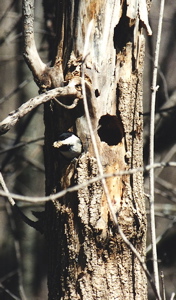
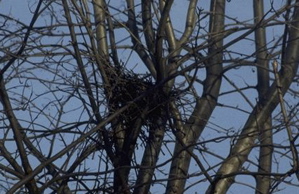
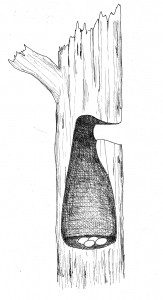
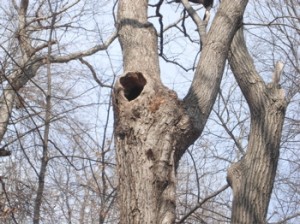
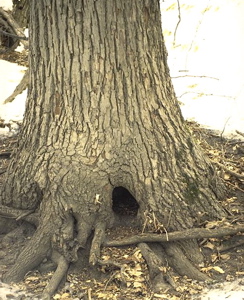
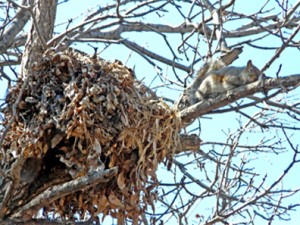
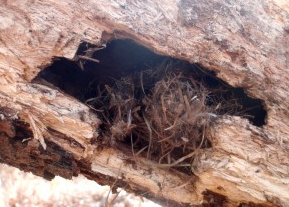
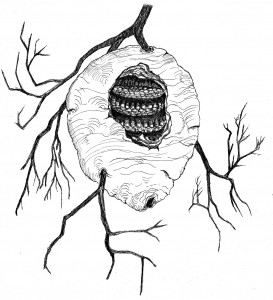
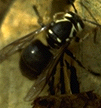

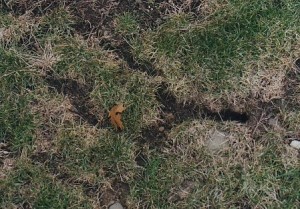
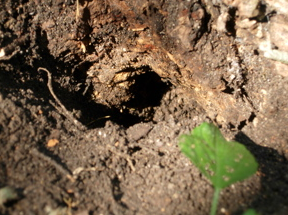
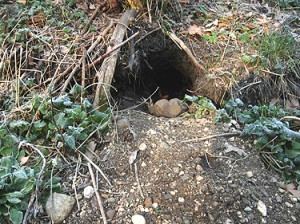
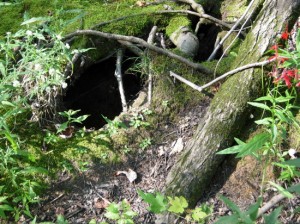
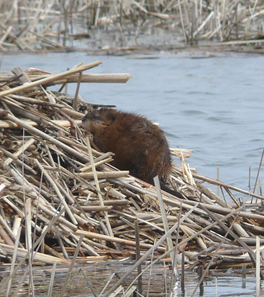
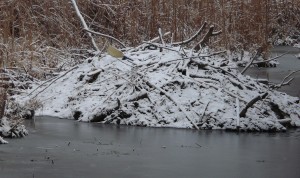
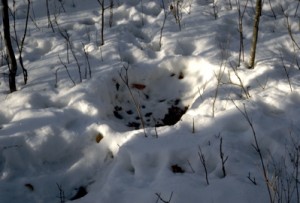
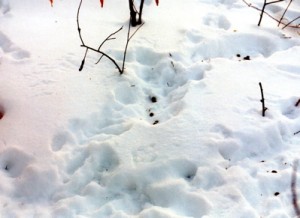



These are branches all the way around the tree and some of the places about 3 feet high what made it
This morning, we found a nicely mounded pile of leaves & debris at the corner of our porch and the wall that runs down one side. It is approximately 10″ W x 6-8″ D x 2′ L. It was not there four days ago when I watered the porch plants. After removing a wheelbarrow full of it, we found nothing but a slightly wallowed area near the porch/wall intersection. We have rusty back & lime green lizards that even in mass wouldn’t likely be able to do this. There are no known alligators in our area and it doesn’t really look like a rabbit warren. We have chipmunks & armadillos but they are in IN ground holes. Don’t think it would be a skunk as there is nothing to get under. After 30 years in wildlife resources, we’ve never seen anything like this in any area of Georgia.
The picture above showing a squirrel opening in the base of the tree. Is this common. We have a tree in a common area that looks like that. There is dirt around the opening, that looks like to have been pushed out the hole. Are there any other type of animals that lodge like this.
Thank you very much
Ron ROunds
I can’t answer that, Ron. Keep your eye on the hole. What kind of material was pushed out? Nesting material? Was there any scat, or signs of food eaten by the critter. Also, how big is the hole? Is it larger enough for a raccoon, squirrel, or mouse?
We have holes at the base of several trees with the center very hollow and saw dust falling out. Any ideas about what type of animal is doing this.
We have just discovered a problem at the base of out silver bearch tree. There is a rotting piece of old stump of a cut down trunk the first morning we found 2 large burrow holes we covered it back up but this morning the hole was much bigger nothing else has been disturbed but fear it has weakend the rest of the tree does anyone know what animal is causing this please
Jan